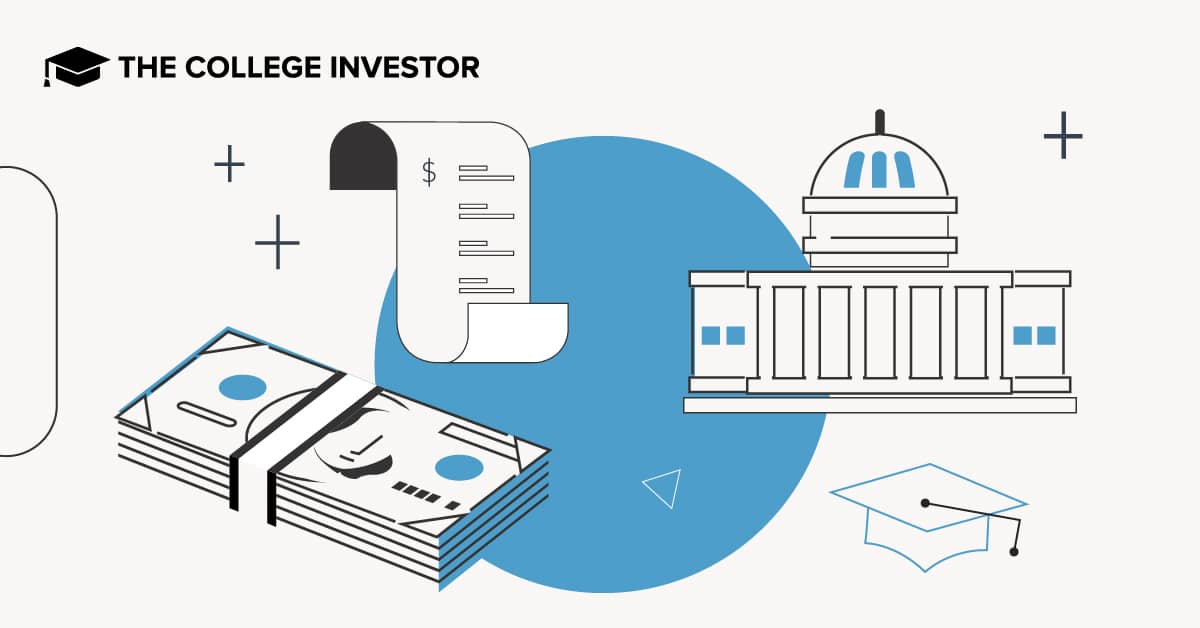
It should be a simple question: does the government benefit from student loans? But depending on who you ask, the federal government either made a profit or lost money on federal student loans before the pandemic. The answer depends on political and accounting perspectives.
However, during the pandemic, the payment pause and interest waiver has resulted in the federal government losing money on federal student loans, regardless of the method used to calculate the subsidy rates. By forgoing nearly $5 billion a month in interest, the federal student loan program went from profit to loss, even in the most optimistic of forecasts.
Let’s take a look at how the federal government budget calculates grant rates for various federal programs. But before we do this, let’s take a look at the concept of net present value accounting.
What is Net Present Value?
When a loan program generates income over time, you can evaluate the program’s total income by calculating the present value of future income. Income includes not only future interest payments, but also future principal repayments.
A simplistic approach is to simply add up the future payment amounts.
Total student loan income = sum of all future payments
But future dollars are worth less than current dollars, partly because of inflation.
A more sophisticated approach calculates the present value of the future payments by discounting them.
For example, if annual inflation is 5%, a dollar in one year will have the same purchasing power as 95 cents today, and a dollar in two years is worth just under 91 cents today. The cumulative impact is calculated on the basis of a product of the present value of each year.
The present value depends on the choice of discount rate. Common choices are the inflation rate and a risk-free return. The yield on US Treasuries of comparable maturity is often used as a risk-free return, as investments in US Treasuries involve a low level of risk.
In fact, present value is the amount you would need to invest now in a risk-free investment to provide the future flow of loan payments.
Present value of student loan income = the present value of all future payments discounted using inflation and yield
But there are often philosophical differences in the choice of a risk-free return.
The Federal Credit Reform Act of 1990 specifies the methodology to be used in the federal budget.
However, some argue that the discount rate is too low. They advocate the use of Fair Value Accounting (FVA), which uses a higher discount rate because it takes market risk into account. But government programs are not subject to the same risks as commercial programs. Oddly enough, proponents of Fair Value Accounting are often selective in the choice of programs they feel FVA should be used for, so the debate seems more political than policy-driven.
A higher discount rate lowers the value of future income by more than a lower discount rate. After you subtract the costs from the present value of the future income, you can change it from profit to loss or vice versa, depending on the discount rate choice.
What does the federal budget say?
The Education Addendum to the Federal Budget provides an analysis of the cost of the student loan program, called grants. It contains actual figures for the previous year and estimates for the current year and the following year.
Grant costs are broken down by loan type, including new subsidized Federal Direct Stafford Loans, unsubsidized Federal Direct Stafford Loans for undergraduate and graduate students, new Federal Direct Parent PLUS loans and Federal Direct Grad PLUS loans, as well as Federal Direct Consolidation Loans . There is also a global amount for loan grants, plus an overhead figure for federal administrative costs.
This table shows the actual subsidy costs from the federal budget for the last several federal financial years. Positive numbers indicate net costs, while negative numbers indicate net profit. So if you’re wondering where the government might benefit from student loans, look for NEGATIVE number loan programs (such as Parent PLUS Loans).
The program costs are expressed in percentages. For example, a cost of 2% means it will cost the federal government $2 over the life of the loan based on the net present value for every $100 borrowed.
The Federal Direct Loan program went from a gain during the Obama administration to a loss during the Trump administration. The loss increased significantly in FY2020 as a result of the payment pause and interest exemption during the pandemic.
Subsidized Stafford loans always have a net cost because of the cost of the subsidized interest benefit. Parent PLUS loans are usually profitable because of higher interest rates and lower default rates, offsetting the losses in the other loan programs.
Unsubsidized Stafford (U)
Unsubsidized Stafford (G)
Total Loan Grant (Cost)
Federal Administrative Fees
To summarize the table a bit, this means that in fiscal year 2020, federal student loan programs cost the government $18.75 for every $100 borrowed. In more “normal” years, such as 2017, the federal student loan program cost government student loans $0.70 for every $100 borrowed.
The grant cost is based in part on interest and fees, length of average loan term, default rates, defaults excluding recoveries and the recovery rate.
Average loan maturity for FY2022 is 17 years, with a weighted average interest rate of 4.68%, average loan fees of 1.31% (1.057% for Federal Direct Stafford Loans and 4.228% for Federal Direct PLUS Loans), a lifetime default rate of 19.13% and a recovery rate of 104.74%.
The net recovery rate for defaulting loans is about 80 to 85 cents on the dollar after deducting collection fees. The recovery rate is much higher than for commercial loans, in part because the federal government has very strong powers to enforce repayment, including administrative wage garnishment, compensation for income tax refunds, and compensation for Social Security benefits.
Program costs must be re-estimated periodically, including changes in interest rates and other assumptions. The re-estimations are usually higher than the original subsidy percentages. So even if the loan program looks like it’s making a profit at first, it may eventually show a net cost after the program cost is re-estimated.
The focus of federal student loan programs is on enabling students to pay for college education and not provide profits to the federal government.
Where does all the money go?
Borrowers often wonder how the U.S. Department of Education spends the interest that borrowers pay on federal student loans under its direct lending program. Most of the money goes towards the costs of creating, maintaining and collecting the student loans, as well as defaults, waivers and forgiveness of loans.
Federal student loans are funded by issuing US Treasury bonds, which is money borrowed from investors. The federal government must pay interest on US Treasury bonds. So part of the interest that borrowers pay covers the cost of the funds used to make the loans. There is also a fee paid by the U.S. Department of Education to the U.S. Treasury Department to cover the costs of issuing and administering U.S. Treasuries.
Loan managers receive a fee to service federal student loans. Loan servicing includes initiating the loans, tracking the loans, communicating with borrowers, sending loan statements, customer service (e.g., call centers), processing payments, tracking delinquent borrowers, and complying with federal law – and regulations. The loan servicers are paid on a unit cost basis, receiving a fixed amount per borrower depending on the repayment status of the borrower’s loans. The service charges range from $0.45 to $2.85 per borrower per month.
Subsidized interest benefits, in which the federal government pays the interest on subsidized Federal Direct Stafford loans during the school and grace periods, as well as periods of allowed deferral, reduce the interest income the federal government would otherwise receive. In addition, interest on federal student loans held by the U.S. Department of Education during the Covid-19 pandemic was waived.
Federal student loans have much higher default rates than private student loans, in part because federal student loans are not co-signed and are issued to borrowers without regard to credit scores or debt-to-income ratios. Even with a high recovery rate, there are still costs associated with collecting a defaulting loan, and the net income is lower than for borrowers with a current loan. The average amount collected, after deduction of collection costs, is lower than the amount owed.
Student loan forgiveness and discharge programs reduce the interest and principal paid on the canceled student loan debt.
There are also administrative overheads for employees of the United States Department of Education, who oversee the loan servicers and collection agencies.
If there were profits on federal student loans, the net income would be used to cover the costs of other federal student aid programs, such as the Federal Pell Grant and Federal Work-Study programs. When federal law reduces the cost of federal student loan programs, Congress often uses the savings to justify increased spending in other parts of the U.S. Department of Education budget.
This post Does the government win from student loans?
was original published at “https://thecollegeinvestor.com/39673/does-the-government-profit-off-of-student-loans/”




